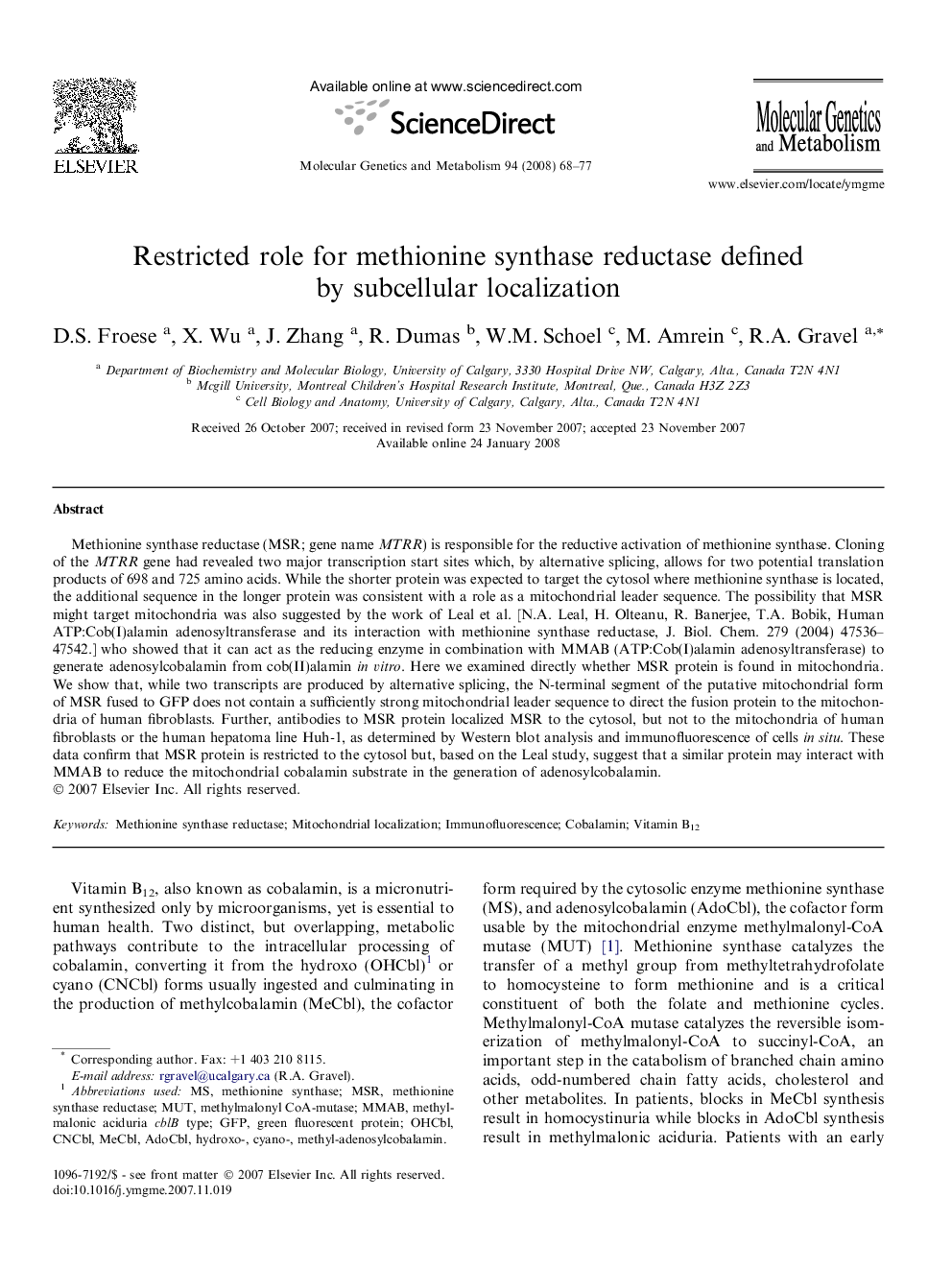| Article ID | Journal | Published Year | Pages | File Type |
|---|---|---|---|---|
| 2000049 | Molecular Genetics and Metabolism | 2008 | 10 Pages |
Methionine synthase reductase (MSR; gene name MTRR) is responsible for the reductive activation of methionine synthase. Cloning of the MTRR gene had revealed two major transcription start sites which, by alternative splicing, allows for two potential translation products of 698 and 725 amino acids. While the shorter protein was expected to target the cytosol where methionine synthase is located, the additional sequence in the longer protein was consistent with a role as a mitochondrial leader sequence. The possibility that MSR might target mitochondria was also suggested by the work of Leal et al. [N.A. Leal, H. Olteanu, R. Banerjee, T.A. Bobik, Human ATP:Cob(I)alamin adenosyltransferase and its interaction with methionine synthase reductase, J. Biol. Chem. 279 (2004) 47536–47542.] who showed that it can act as the reducing enzyme in combination with MMAB (ATP:Cob(I)alamin adenosyltransferase) to generate adenosylcobalamin from cob(II)alamin in vitro. Here we examined directly whether MSR protein is found in mitochondria. We show that, while two transcripts are produced by alternative splicing, the N-terminal segment of the putative mitochondrial form of MSR fused to GFP does not contain a sufficiently strong mitochondrial leader sequence to direct the fusion protein to the mitochondria of human fibroblasts. Further, antibodies to MSR protein localized MSR to the cytosol, but not to the mitochondria of human fibroblasts or the human hepatoma line Huh-1, as determined by Western blot analysis and immunofluorescence of cells in situ. These data confirm that MSR protein is restricted to the cytosol but, based on the Leal study, suggest that a similar protein may interact with MMAB to reduce the mitochondrial cobalamin substrate in the generation of adenosylcobalamin.
